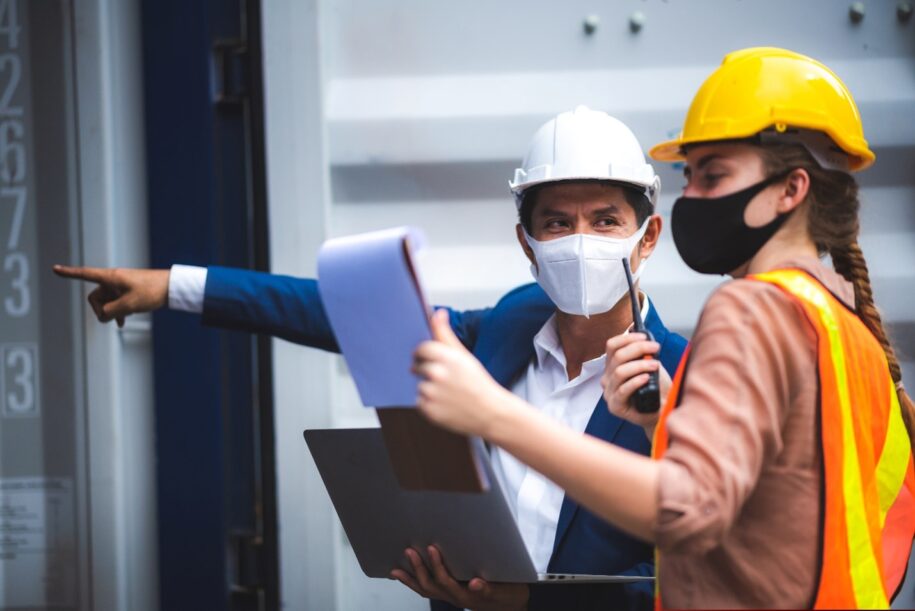An effective way to identify workplace hazards is to conduct periodic workplace inspections. Companies that find and address unsafe conditions through regular safety inspections/audits can reduce the chances of accidents and injuries. This, in turn, will reduce medical and insurance costs and save the company money. Frequent inspections also assist companies in keeping up with compliance, driving continuous improvement, and reducing the likelihood of an OSHA inspection.
As per the CDC’s “Hierarchy of Controls,” once hazards have been identified, they should be addressed in the following order:
- Elimination- the preferable response as it entails completely removing the hazard so that there is no longer the potential for harm.
- Substitution- for example, using green chemistry in a lab so that workers have less potential for exposure to toxic chemicals.
- Engineering controls- this category of hazard response includes any modifications to the workspace and/or equipment to isolate hazards from the workers.
- Administrative controls- introducing training, job rotation, rest breaks, and other such alterations to work performance can reduce the impact of exposure to hazards.
- Use PPE- personal protective equipment should be issued to all workers as a means of keeping them safe when there is no alternative to encountering hazards. PPE works in conjunction with the other methods of response.
Below are 8 tips that all companies can follow to ensure successful job site inspections.
1. Prepare for the audit.
Inspections should never be undertaken without an understanding and plan for how they will be carried out. Determine who will be on the audit team and what personal protective equipment (PPE) will be needed for conducting the inspection. The designated leader of the audit team must “practice what they preach,” ensuring that they correctly wear all necessary PPE and comply with any posted safety warning signs and procedures throughout the inspection.
2. Develop a checklist.
A well-developed checklist is key to an efficient and effective inspection. The checklist should account for the job site’s specific requirements, as this will assist in examining the work environment, workers’ tasks, and the machinery/equipment. Following a customized checklist ensures consistent and comprehensive work, regardless of what team members are assigned the role of conducting the inspection.
3. Understand OSHA requirements.
OSHA sets rules and regulations related to workplace safety. These regulations cover industrial operations that range from chemical exposure, PPE requirements, machine guarding, and power tool use. Continuously monitoring the workplace and understanding and following OSHA’s standards go hand-in-hand when ensuring compliance with safety legislation.
4. Review previous reports.
You will find it helpful to review prior inspection reports, injury and workers’ compensation information, previous incident investigation reports, and any recent near-miss incidents. This information will help you to familiarize yourself with what areas, tasks, or activities are the most hazardous in your workplace. Your inspection should focus on areas where previous hazards have been identified.
5. Document findings.
By documenting safety inspections, companies can store important data that is essential to analyzing trends in safety compliance. Technology can greatly aid the process of documenting findings by enabling information to be quickly and easily uploaded into a database.
6. Track important data.
Tracking safety observations will help a company to create safety goals. Once a baseline has been established, improvement can be accurately measured. Recorded data will help in identifying where deficiencies exist and planning out any necessary changes. Utilizing modern EH&S management software makes it easier to document and photograph hazards.
7. Talk to employees.
Psychological safety goes a long way in advancing workplace safety programs. Workers should be given the opportunity to express any concerns that they have about a job task or a piece of equipment or tool that they use. Often employees are the best resource to explain a hazard in the workplace that may be misunderstood or overlooked by the audit team. The way to motivate these critical conversations is for those in authority (e.g., floor managers, safety supervisors, auditors, etc.) to initiate them.
8. Follow up.
Once an inspection has been completed, there may be corrective actions and other essential processes for appropriate follow-up. To keep things from slipping through the cracks, it is important to make sure that actions are addressed in order of priority and accountability is established. EH&S software is an effective tool for ensuring that the corrective and preventative actions have been identified, assigned, and completed.
Using EH&S software to conduct job site inspections can simplify documentation, tracking, and the coordination of teamwork. EH&S software allows a company to document findings, identify problems, ensure corrective actions are completed, increase efficiency, and improve the overall quality of any safety program.
Author Bio
The SafetyStratus Research Advisory Group (RAG) brings together thought leaders from the global environmental, health, and safety community to promote best practices and provide key insights in the profession and the industries they serve. The Research Advisory Group also advocates, where practical, the intersection of and advances with the use of technology, such as the SafetyStratus enterprise EHS software platform. Group membership consists of representatives from across varied disciplines and market sectors as well as select members of the SafetyStratus team.
The primary objectives of the SafetyStratus RAG partnership are to:
- Build a strategic partnership between EHS practitioners and the SafetyStratus team.
- Provide engaging and practical content to the global EHS community.
- Provide discipline and market feedback specific to SafetyStratus products and services.
While the objectives of the RAG are varied, the primary public-facing outcome will be available through engaging and practical content found on the SafetyStratus resource pages. Various articles, papers, and other valuable resources will be produced and shared as part of an ongoing effort to cultivate a robust community. Ultimately, the SafetyStratus RAG will expand to have a broader reach and provide opportunities for more inclusion by all interested EHS professionals a collaborative community environment.



